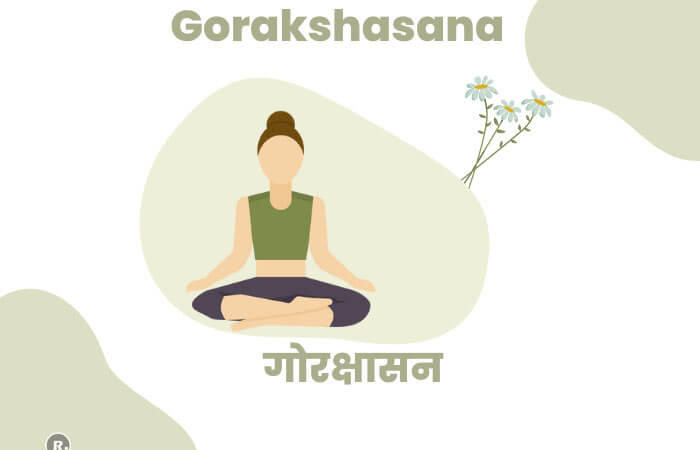What is Yoga – In Depth

Yoga is a mind and body practice with historical origins in ancient Indian philosophy. Like other meditative movement practices used for health purposes, various styles of yoga typically combine physical postures, breathing techniques, and meditation or relaxation. This fact sheet provides basic information about yoga, summarizes scientific research on effectiveness and safety, and suggests sources for additional information.
Key Facts
-
Recent studies in people with chronic low-back pain suggest that a carefully adapted set of yoga poses may help reduce pain and improve function (the ability to walk and move). Studies also suggest that practicing yoga (as well as other forms of regular exercise) might have other health benefits such as reducing heart rate and blood pressure and may also help relieve anxiety and depression. Other research suggests yoga is not helpful for asthma, and studies looking at yoga and arthritis have had mixed results.
-
People with high blood pressure, glaucoma, or sciatica, and women who are pregnant should modify or avoid some yoga poses.
-
Ask a trusted source (such as a health care provider or local hospital) to recommend a yoga practitioner. Contact professional organizations for the names of practitioners who have completed an acceptable training program.
-
Tell all your health care providers about any complementary health approaches you use. Give them a full picture of what you do to manage your health. This will help ensure coordinated and safe care.
About Yoga
Yoga in its full form combines physical postures, breathing exercises, meditation, and a distinct philosophy. There are numerous styles of yoga. Hatha yoga, commonly practiced in the United States and Europe, emphasizes postures, breathing exercises, and meditation. Hatha yoga styles include Ananda, Anusara, Ashtanga, Bikram, Iyengar, Kripalu, Kundalini, Viniyoga, and others.
Side Effects and Risks
-
Yoga is generally low-impact and safe for healthy people when practiced appropriately under the guidance of a well-trained instructor.
-
Overall, those who practice yoga have a low rate of side effects, and the risk of serious injury from yoga is quite low. However, certain types of stroke and pain from nerve damage are among the rare possible side effects of practicing yoga.
-
Women who are pregnant and people with certain medical conditions, such as high blood pressure, glaucoma (a condition in which fluid pressure within the eye slowly increases and may damage the eye’s optic nerve), and sciatica (pain, weakness, numbing, or tingling that may extend from the lower back to the calf, foot, or even the toes), should modify or avoid some yoga poses.
Use of Yoga for Health in the United States
According to the 2007 National Health Interview Survey (NHIS), which included a comprehensive survey on the use of complementary health approaches by Americans, yoga is the sixth most commonly used complementary health practice among adults. More than 13 million adults practiced yoga in the previous year, and between the 2002 and 2007 NHIS, the use of yoga among adults increased by 1 percent (or approximately 3 million people). The 2007 survey also found that more than 1.5 million children practiced yoga in the previous year.
Many people who practice yoga do so to maintain their health and well-being, improve physical fitness, relieve stress, and enhance the quality of life. In addition, they may be addressing specific health conditions, such as back pain, neck pain, arthritis, and anxiety.
What the Science Says About Yoga
Current research suggests that a carefully adapted set of yoga poses may reduce low-back pain and improve function. Other studies also suggest that practicing yoga (as well as other forms of regular exercise) might improve quality of life; reduce stress; lower heart rate and blood pressure; help relieve anxiety, depression, and insomnia; and improve overall physical fitness, strength, and flexibility. But some research suggests yoga may not improve asthma, and studies looking at yoga and arthritis have had mixed results.
-
One NCCIH-funded study of 90 people with chronic low-back pain found that participants who practiced Iyengar yoga had significantly less disability, pain, and depression after 6 months.
-
In a 2011 study, also funded by NCCIH, researchers compared yoga with conventional stretching exercises or a self-care book in 228 adults with chronic low-back pain. The results showed that both yoga and stretching were more effective than a self-care book for improving function and reducing symptoms due to chronic low-back pain.
-
Conclusions from another 2011 study of 313 adults with chronic or recurring low-back pain suggested that 12 weekly yoga classes resulted in better function than usual medical care.
However, studies show that certain health conditions may not benefit from yoga.
-
A 2011 systematic review of clinical studies suggests that there is no sound evidence that yoga improves asthma.
-
A 2011 review of the literature reports that few published studies have looked at yoga and arthritis, and of those that have, results are inconclusive. The two main types of arthritis—osteoarthritis and rheumatoid arthritis—are different conditions, and the effects of yoga may not be the same for each. In addition, the reviewers suggested that even if a study showed that yoga helped osteoarthritic finger joints, it may not help osteoarthritic knee joints.
Scientific Results of Yoga for Health and Well-Being Video
-
A look at innovative technology that examines how older people use their muscles and joints in certain yoga postures. (George Salem, Ph.D., University of Southern California)
-
An overview of a rigorously designed study that shows yoga may benefit people with chronic low-back pain, a common and difficult-to-treat problem. (Karen Sherman, Ph.D., M.P.H., Group Health Research Institute)
-
Valuable “dos and don’ts” for consumers who are thinking about practicing yoga.
Training, Licensing, and Certification
There are many training programs for yoga teachers throughout the country. These programs range from a few days to more than 2 years. Standards for teacher training and certification differ depending on the style of yoga.
There are organizations that register yoga teachers and training programs that have complied with a certain curriculum and educational standards. For example, one nonprofit group (the Yoga Alliance) requires at least 200 hours of training, with a specified number of hours in areas including techniques, teaching methodology, anatomy, physiology, and philosophy. Most yoga therapist training programs involve 500 hours or more. The International Association of Yoga Therapists is developing standards for yoga therapy training.
If You Are Considering Practicing Yoga
-
Do not use yoga to replace conventional medical care or to postpone seeing a health care provider about pain or any other medical condition.
-
If you have a medical condition, talk to your healthcare provider before starting yoga.
-
Ask a trusted source (such as your health care provider or a nearby hospital) to recommend a yoga practitioner. Find out about the training and experience of any practitioner you are considering.
-
Everyone’s body is different, and yoga postures should be modified based on individual abilities. Carefully selecting an instructor who is experienced with and attentive to your needs is an important step toward helping you practice yoga safely. Ask about the physical demands of the type of yoga in which you are interested and inform your yoga instructor about any medical issues you have.
-
Carefully think about the type of yoga you are interested in. For example, hot yoga (such as Bikram yoga) may involve standing and moving in humid environments with temperatures as high as 105°F. Because such settings may be physically stressful, people who practice hot yoga should take certain precautions. These include drinking water before, during, and after hot yoga practice and wearing suitable clothing. People with conditions that may be affected by excessive heat, such as heart disease, lung disease, and a prior history of heatstroke may want to avoid this form of yoga. Women who are pregnant may want to check with their healthcare providers before starting hot yoga.
-
Tell all your health care providers about any complementary health approaches you use. Give them a full picture of what you do to manage your health. This will help ensure coordinated and safe care.
Suggested Read: Best Poses for Morning Yoga
Source: https://nccih.nih.gov/health/yoga/introduction.htm






